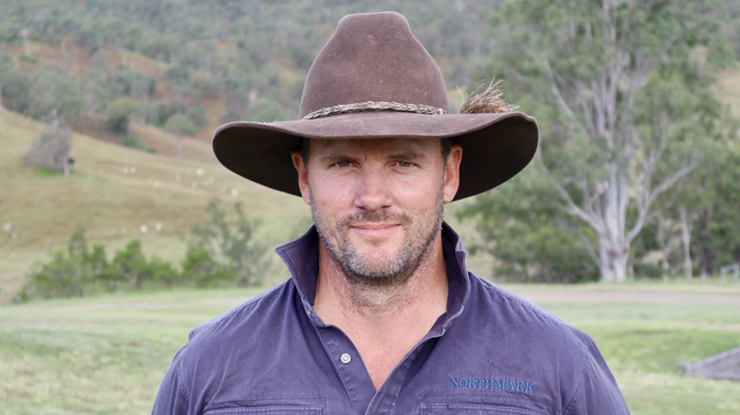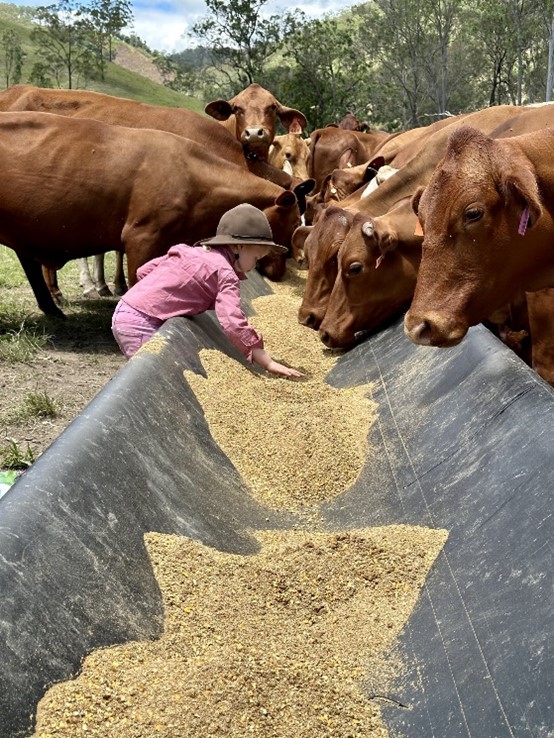
Five years into developing an internal genetics program to complement their northern commercial beef production goals, CAP Genomics Pty Ltd has found good genetics to be the baseline for creating a cohesive and efficient supply chain through to market.
CAP Genomics was a collaborating herd in MLA's Northern Genomics Project, serving an integral role in the trailing and initial development of a genomic tool, known as RePRO BI. The
tool is now commercially available to northern beef producers through Black Box Co.
CAP Genomics Managing Director Chris Simpson said leveraging advanced genomic and genetic tools enabled the company to effectively set, target and improve their herd's Genomic Breeding Values (GBVs) and Estimated Breeding Values (EBVs) to better their overall production.
Putting genetics first
According to Chris, CAP Genomics' genetic program aims to enhance the productivity of tropical composite breeds, with a specific emphasis on integrating African-derived Bos taurus cattle.
"We currently run just under 2,000 animals, but over the years we've genetically profiled more than 3,000," Chris said.
"While our genetic strategy is still in the development stage, we've found through our involvement in the Northern Genomics Project that developing a strong genetic base through data collection, integrity and science is fundamental in optimising other facets of the beef production process."
Chris said the project enforced the necessity of a strong selective breeding program.
"During the formative years of our internal genetics program, we applied stringent processes to our production system, such as providing minimal nutritional support and implementing an agnostic natural joining program," Chris said.
"This approach was designed to 'stresstest' our system, allowing us to identify the most resilient and high-performing genetics, as well as poorest-performing genetics under challenging conditions.
"By enacting these tests early on, we were able to not only see how our benchmarked traits identified through genomic profiling held up in practice, but also how important genetics are to continued herd productivity despite poor seasonal conditions."
He said, as a result, they determined:
- production levels above 75% were significantly influenced by good nutrition
- good genetics were crucial to optmise calf survival and productivity when environmental conditions and nutritional supply were less than ideal.
"We've discovered that through improving fertility and adaptability to harsher climates, our herd's genetics can set a strong foundation for us to establish a robust production system which supports long-term sustainability and profitability."

CAP Genomics is an early adopter of the RePRO BI tool, developed with MLA funding.
Analysing the data
Chris has seen a clear value from integrating advanced genomic tools into their breeding program as a result of their involvement in the Northern Genomics Project.
The RePRO BI tool provided information which they could use to immediately identify sire lines with sub-par performance – critical for an enterprise which breeds its own bulls.
"Sires have the biggest genetic impact on the herd and this early identification of weaknesses enabled us to make informed decisions about which sires to retain or cull, thereby improving the overall quality of the herd," he said.
In the longer term, the continuous genetic profiling with the RePRO BI genomic tool has enabled them to record GBV increases and analyse them alongside sire EBV and dam production data.
"With the tools' aid, we have been able to identify and report the uplifts we saw on the GBV results of our sires and their respective progeny cohorts," Chris said.
"Our success in analysing a sire's average GBV quotient has been reflected through one of our sire selections, acquired off the Maynard Cattle Company, who has produced an average GBV increase of more than 25% on 100% of his progeny.
"These GBV increases reflected the benefits of targeted breeding, demonstrating the effectiveness of our strategy to cull underperforming cattle and focus on enhancing key traits such as fertility and growth."
To better analyse and record herd performance, they overlayed EBVs and dam productiondata with GBV outputs.
"Combining and analysing GBV outputs, EBVs on sires and dam production data helped us clearly identify top contributors for our embryo donor program – which is aimed at expediting genetic gains from the original GBV benchmarks," he said.
"The outcome of integrating genetic data with a traditional phenotypic analysis is enhanced decision making.
"Both data sources provide a comprehensive understanding of an animal, to make better informed breeding and culling decisions – ultimately leading to a more productive and more resilient herd."
Opening the doors to collaboration
As CAP Genomics continues to adapt and develop their internal genetics program, Chris said the next step will be to open the doors for collaboration and contributions from other producers.
"We are currently in the process of building an opensource platform (available within 12 months) which outlines our breeding and genetic systems," he said.
"Through this initiative, we hope to foster connections, innovation and continuous improvement to northern beef herds – as we are all in this together."






